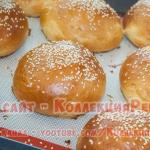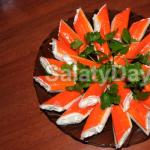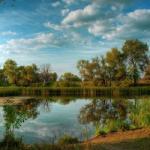What materials are best to use for painting on plywood? How to prepare plywood?
You can paint on plywood with oil paints, acrylics, even gouache and watercolors, pencil and ink; in my student years they even painted on plywood with charcoal. Take plywood with a thickness of at least 6 mm, it must be primed, you can use a deep penetration acrylic primer or buy a special primer at an art store. If you apply the design with oil paint, then it is better to soak the plywood under it with drying oil. Instead of primer, you can use PVA glue, it’s cheap and the paint adheres better.
And if the plywood is waterproof, then it is not necessary to apply primer; paint is easily applied to it and does not warp over time. Art stores sell sheets of plywood already impregnated, which preserves the texture of the material.
Cover the finished drawing with varnish.
Work by Japanese artist Audrey Kawasaki: oil, pencil, ink:
It is best to paint on plywood with oil paints. And the plywood needs to be properly prepared for this. First of all, it must be very dry. Remember that plywood has several layers. You need to choose six- or ten-layer plywood. The plywood must be coated 2-3 times with drying oil made from linseed oil or the plywood should be dipped in hot drying oil for a day. Then dry the plywood for 12-15 days. Plywood impregnated in this way must be primed in 2-4 thin layers with glue-chalk primer. (I heard that some people prime with PVA).

What is plywood carving? This question has probably arisen among many novice masters. Plywood carving is a decorative and applied art.There are several types of slotted carvings for plywood:
- openwork;
- cutting out an image on a painted plywood sheet;
- sawing;
- combination (for example, openwork method + sawing).
Where to begin
- A plywood sheet is used as a blank, the surface of which should not have any defects. As a rule, first-grade and second-grade sheets of glued wood veneer are used for these purposes.
- In order to carve plywood with a jigsaw, use a material whose thickness is in the range of 3-12 millimeters. The size of the sheet of glued veneer depends on the image that should be applied to it.
It is important to know! A sheet of glued veneer should be cut along the grain, not across. Therefore, the base must be cut in such a way that the lines of the picture are located along the outer layer.

- Before painting the workpiece, it is necessary to clean the plywood using files. This process must occur along the edge. Otherwise, the sheets of glued veneer will begin to crumble.
- Using sandpaper (use fine-grained and coarse-grained), sand the surface of the sheets on which the picture will be cut out. Begin to process with a fine-grained sandpaper. The result is a smooth surface. After sanding, the base should be wiped with a damp cloth (this will remove working dust).
- For painting use dark colors: blue, gray, black. For this you can use ordinary paints: gouache or watercolor. However, over time, such paints fade, so it is recommended to use nitro paint. This coloring composition adheres well. This composition dries in about half an hour.
Important point! Nitro paint, acrylic dyes and gouache are only suitable for drawing contours. To apply a shadow picture, you need to cover the base with an aqueous solution.
- After the design is cut out, its edges should be carefully sanded using sandpaper.
In order to carry out quality carving on plywood, you need to think about the drawings in advance. The selected design can be printed on a printer or drawn with your own hands directly on a plywood sheet. They also make carvings using a jigsaw on plywood according to a template.

You can also use tracing paper. Through it, a picture is transferred, which is applied to the workpiece. This method is considered the simplest.
Important! Every novice craftsman must remember that the process of creating plywood carvings with a jigsaw begins with drawings. Carving plywood with a jigsaw, the drawings and templates of which will correspond to the plan, will turn out to be the most attractive.
Tools required for work
First of all, it is worth noting that the tool for cutting the material should be chosen from steel. Steel cutters are considered more durable. Drills, pieces of wire, needle files or reamers will do.
It is also worth paying attention to sharpening. The tool must be well sharpened, otherwise the plywood will become unusable.
You should first make a small hole into which the chips will fall during the cutting process of the material.

To carry out slotted carving on plywood with a jigsaw/laser carving on plywood, you will need flat, semicircular and triangular cutters.
Important! The tool should be installed at an angle of 45 degrees.
So, to work you will need:
- sandpaper (coarse and fine grain);
- file, brace, jigsaw;
- coloring composition, varnish;
- incisors and tampon.
How to make a blank
Before you start making the workpiece, you need to prepare your workplace. The table on which the workpiece will be made must be durable. If during work the table accidentally moves out of place or shakes, then all the work will go to waste. The lighting should be good.
Stages:
- The incisor is clamped with one hand and the blade is held with the other. In this case, the handle of the tool should rest against the palm. The little finger on the second hand controls the angle of the blade.
- When cutting out curved lines, no tilting is done. The pressure exerted on the tool should be controlled. This is necessary to ensure that all lines are the same width.
- After the image has been applied, several layers of varnish should be applied. However, the second coat of bark should be applied only after the first coat has completely dried.
If the thread cut into plywood with a jigsaw corresponds to the drawings, it means that the master did everything correctly.

Openwork method
Work process:
- The drawing is applied using a pre-prepared template.
- Sawing is carried out. Then mark the guide holes.
- Carry out cutting along the internal contour.
- The cut out elements are sanded using sandpaper.
- Securely secure the workpiece. Then mark the places where holes need to be made. To do this, use a brace. If you need to make small holes, use an awl.
- After the work has been done, the picture is sawed off along the contour. The product is then cleaned and polished.
- Sawing is carried out using an electric or regular jigsaw.

Sawing
It is worth noting that the work process is practically no different from previous methods. However, many believe that this method is the simplest and most understandable. Sawing is carried out using a regular jigsaw or an electric one.
It is worth noting that in factories, elements are cut out using a laser.
In order for the cutting to be attractive, you must be able to work with a jigsaw.
Process:
- The selected image is applied to the plywood sheet. A novice craftsman should first choose something simpler, where he will not have to cut out internal holes with smooth lines.
- The workpiece is securely fixed using clamps. If they are not there, then you can do without them.
- The saw should be perpendicular to the plane of the base. You need to cut evenly. The hand should move in the direction of the sawed outline.
- The product is sanded using sandpaper. You should also take care of the edges.
- The product is painted or varnished.

Why use plywood to create carvings?
Currently, this material is actively used not only in the manufacture of decorative elements, it is also used in the manufacture of furniture, subfloors, wall decoration, ceilings and more.
This material is chosen for many reasons:
- not afraid of moisture;
- temperature changes do not have a negative impact on plywood;
- low cost (unlike solid wood, the price of a plywood sheet is much lower);
- ease of operation;
- light weight.
It is also worth noting that for the manufacture of crafts and pieces of furniture where carvings will be present, it is necessary to choose first-class or second-class plywood. The remaining varieties (3,4) are not suitable for such creativity, since there are cracks, chips, and knots on the surface.

Finally
If carving on plywood was carried out strictly following the instructions, while taking into account all the features of cutting and material, then the result will be a product that will deserve everyone's attention. With the help of such crafts you can not only decorate the interior, but also give it as a gift.
However, in addition to the fact that as a result you can get a beautiful product, the process itself is very interesting and exciting.
When it comes to painting, we involuntarily imagine canvas or paper, brushes, paints. This is understandable, because all classical works are made this way, and we are used to seeing paintings in a baguette. But nowadays there are many other bases for painting, even the most unexpected ones!
"Standard" surfaces for painting
1. Metal
Such bases are more suitable for painting with acrylic and oil. Often, artists use sheets of copper, stainless steel and aluminum.

The biggest advantage of these foundations is their impeccable strength. But over time, any metal oxidizes, and when exposed to temperature, it tends to shrink or expand, which leads to cracks (craquelures). Therefore, the safety of the canvas on metal is low. The exception is gold leaf, which, unlike ordinary metal, does not need to be additionally primed. And when painting with translucent paints, you get a bewitching warm tone and golden shimmer.
Due to their heavy weight, all paintings made on metal bases are small. However, now artists are presented with an amazing opportunity to write on such a metal building material as “honeycomb aluminum”. It is light, smooth like glass, and is not subject to bending or deformation from drying paints. Aluminum honeycombs are similar in structure to corrugated cardboard. You can buy such material in art salons or metal equipment stores.
How to write on metal? The best paints for metal bases are acrylic. You can also work with oil. First, the base must be cleaned of rust and etched with a metal primer.
2. Plywood
This material is made from poplar, birch and mahogany. The result is a multi-layer board, one side of which is rough and the other smooth. The thickness varies from 0.6 to 1.3 cm. Before work, the plywood is sanded with sandpaper and primed with an adhesive solution.

How to write on plywood? Here the choice is almost unlimited: you can paint with oil, acrylic, ink, pencil, gouache and watercolors. Even coal fits perfectly on plywood. The most important thing is that the thickness of plywood for painting should not be less than 6 mm.
As a primer, you can purchase a special primer for plywood, or an acrylic primer will do.
If you are going to work with oil, it would be ideal to saturate the plywood with drying oil. Instead of a primer, you can use an inexpensive option - PVA glue - the paint adheres perfectly!
Note! If the size of the canvas exceeds 45 cm, regardless of its thickness, it should be reinforced with a wooden frame.
3. Hardboard
The material is a mixture of wood fibers crushed into sawdust and glue. From all this, a solid hardboard board is obtained, which is distinguished by its durability, durability and strength. The shelf life of hardboard is comparable to that of hardwood.

Among the shortcomings It is worth noting the large weight and tendency to sag towards the center of gravity. Therefore, hardboard sheets are reinforced on the back side with wooden connecting brackets.
Hardboard is sold almost everywhere and inexpensively. It is better to take hardboard that is smooth on both sides.
How to write on hardboard? Oil is the best paint for this base.
Non-standard basics for painting
1. Asphalt
Painting on asphalt has come to us since the 16th century, when Italian street artists depicted biblical scenes on city streets. For this purpose, coal, chalk, flowers and sand were used.


Today there is even a tradition in this direction - large festivals of street painting on asphalt are held on the streets of Santa Barbara and Grazie de Curnanone.
Today, the popularity of this direction does not fade. In addition to crayons and charcoal, special weather-resistant paints in spray cans are used. Graffiti is especially often painted on asphalt with spray paints. And recently, drawing three-dimensional images on asphalt has become popular.
2. Fabric
This creativity has its own name - “ batik" Experienced batichists say: drawing on fabric is like painting on canvas. Only paint can be applied not only with a brush, but also with a sponge, palm or fingers.
3. Porcelain and earthenware dishes
This trend has existed since ancient times. You can do it at home by painting plates or cups. For this purpose, stained glass paints are used, which first create the outline of the picture, and only then it is filled with color.

4. Windows or glass panels
For painting on windows, it is better to use easily washable stained glass paints. Doing this kind of creativity is more fun with the whole family.

And recently, a new direction in painting on glass panels was opened by Mark Huisman. He paints his paintings with ordinary brown packing tape. But what he ends up with doesn’t fit in his head. How can one correctly convey all the depth, atmosphere, shadows and mood of each plot? Simply amazing!



5. Shaving foam
And this seemingly strange way of drawing is very interesting for children. Drawing on shaving foam is not only a very fun and interesting activity, but also useful. It develops your child's creative thinking and creativity and also exercises his imagination.

On this basis, they draw using the principle of monotype - prints. For work you will need the following materials:
- Shaving foam;
- Cover, plate or flat tray;
- Paints. The best option is liquid gouache or acrylic;
- Matches, toothpicks or thin brush;
- Flat cardboard or ruler;
- Whatman paper or album sheets, but you can also use plain office paper.
How to draw on shaving foam?
Drawing on foam is very simple:
1. First you need to apply foam to a plate or tray, then level it with a ruler;
2. Then add a drop of color onto the shaving foam;
3. Using brushes or toothpicks, paint stains can be spread in a chaotic manner, or creating a specific pattern;
4. When the image is finished, you need to put a clean sheet of paper on it and press it a little;
5. After this, the paper should be removed very carefully so as not to spoil the work;
6. The resulting drawing should be set aside for a while to allow the paint to absorb;
7. Using cardboard or a ruler, remove the remaining foam from the paper. After this, the drawing is simply set aside to dry.
To summarize
In general, the term “non-standard” is not entirely correct, because you can draw on anything. I think the selection of “what else you can draw on” will only confirm these words:
- on furniture;
- on the nails;
- for coffee;
- on the trees;
- on laptops;
- on the body;
- on ivory;
- on parchment;
- on the sand, etc.



What unusual surfaces do you know?) Please share;)
Drawing technology
The method is based on thermal transfer of toner and is quite often used for the manufacture of printed circuit boards at home.
We will use this method to apply a pattern to plywood. So let's get started.
First we need to prepare a drawing and paper.
Drawing
You can download from our website among the crafts you like, or read how to prepare a drawing yourself in the next article.
Paper
We will need glossy paper, the main quality of which will be a low toner retention rate. For example, it could be glossy magazine paper, but I personally use backing paper for labels. If you don’t have anything of the above recommended on hand, you can take plain paper, this technology will work just as well.
Printing a drawing
When printing, you must not forget that the image will be translated as a mirror image, so you need to prepare your layout in advance by “reflecting it horizontally.” You can do this programmatically or select the appropriate setting in the printer settings, provided that your printer supports this function.
Also, in the settings, it is worth turning on high-quality printing - this will give a larger amount of toner on the sheet and, as a result, faster transfer of the drawing to plywood.
Transferring a drawing
To transfer the design, place the printed layout with the toner down on the plywood, and slowly smooth the reverse side with an iron. It takes about one minute to transfer an A4 sheet drawing.
Iron
You can use a regular iron as a toner transfer stove. If you decide to take an iron that is also used in everyday life, then take care of its safety - use a pad made of paper and fabric to avoid the formation of carbon deposits on its surface.
As for me, I use an iron for upholstering aircraft models; it is quite convenient, since you can set the required temperature on it - 190 degrees. The surface of the iron has long been accustomed to various experiments, so I do not use a gasket.
As an alternative, you can use a hair dryer and a roller to transfer the design.
Removing paper
After smoothing the layout evenly with an iron, before removing the paper layer, you should wait some time, allowing the transferred toner to cool.
When the paper is removed, you should check the lines of the drawing to see how successfully they have been transferred and, if necessary, complete the missing elements with a pencil.
At this point, the stage of transferring the drawing onto plywood is completed.
Conclusion
This technology also has one drawback: in the pursuit of saving time, the development of a number of important human qualities is missed, such as:
concentration, patience, perseverance, concentration, accuracy, leisurelyness, thoroughness.
For this reason, I would recommend that beginners, school-age children, first try traditional methods of drawing a drawing on plywood:
Translation using a carbon copy or making a template.
And so, to begin with, we chose several blanks made of 3 mm thick plywood with a New Year theme. We chose a pendant in the shape of a Christmas tree with the symbols of 2018 - a dog and a Christmas tree toy in the shape of a ball with a New Year's house.
Before we start painting with acrylic paints, we sand the surface of each workpiece with fine-grain sandpaper in one direction. At the same time, we are thinking about the design of our blanks and painting the flowers.
For work we will need the following materials and tools:
-
acrylic paints Luch or TURY Design (for children's creativity you can use gouache or tempera, then the finished blanks are varnished)
acrylic varnish (when using acrylic paints in painting blanks, then they do not need to be varnished)
wooden blank from plywood 3mm
sponge or sponge
small roller (with replaceable attachments)
synthetic brushes of different sizes
sanding sponge (zero sandpaper)
The process of painting blanks
Having prepared all the necessary tools and materials and thoroughly sanded the surfaces of our blanks, we proceed directly to painting. We did not pre-prime the surfaces, since this was not required to implement our idea. However, if you work with thick paint or use a texture paste, it is better to prime the product, because in the future this will prevent cracking and peeling of the paint or texture layer.
In the painting we used the following colors: metallics - gold, silver, mother-of-pearl; primary colors – white, burgundy (rich cold red), scarlet (bright red warm, rich orange warm), brown (light, warm), emerald (rich blue-green cold), ultramarine (rich blue cold).
We start with a plywood blank in the shape of a Christmas tree with the symbol of 2018 - a dog. Using a roller, apply metallic or pearl color to one side.

After drying, apply one of the primary colors listed earlier to the other side, sometimes diluting it with white (emerald and ultramarine).
Using light strokes of a dry brush, we apply a “blizzard” effect using white and metallic colors on both sides of our product. In the end it should look like this:

This product can become an independent gift - a toy, a set of toys for the New Year tree or a souvenir, as well as a decoration element in the design of your gifts.

We move on to decorating a Christmas tree toy (souvenir) in the shape of a ball with a New Year's house. The painting process occurs alternately on each side. Be sure to dry each stage of paint application. We start painting with white - snowflakes and smoke from a chimney.

Next, apply emerald color to the Christmas tree. After drying, we paint the stylized spruce branches in a lighter tone (add a little white to the emerald), then apply an even lighter tone, imitating frost or snow on the branches. At the same time, we paint the house with light brown color.

We give the products time to dry. We proceed to further painting and draw the details of the house in a light tone. We begin to paint the bow with scarlet color. We paint the edges of the “ball” with metallic gold. We complement the finished painting with shimmering highlights (pearl paint and silver metallic).
So, our preparations are ready. And now that they have been so transformed, they will become a wonderful gift for your loved ones, family and friends.




